Small arms development after the Asian Pacific Conflict of the late 2140s centered on the construction of medium caliber, lightweight, infantry weapons, and large caliber, heavy, cyborg weaponry.
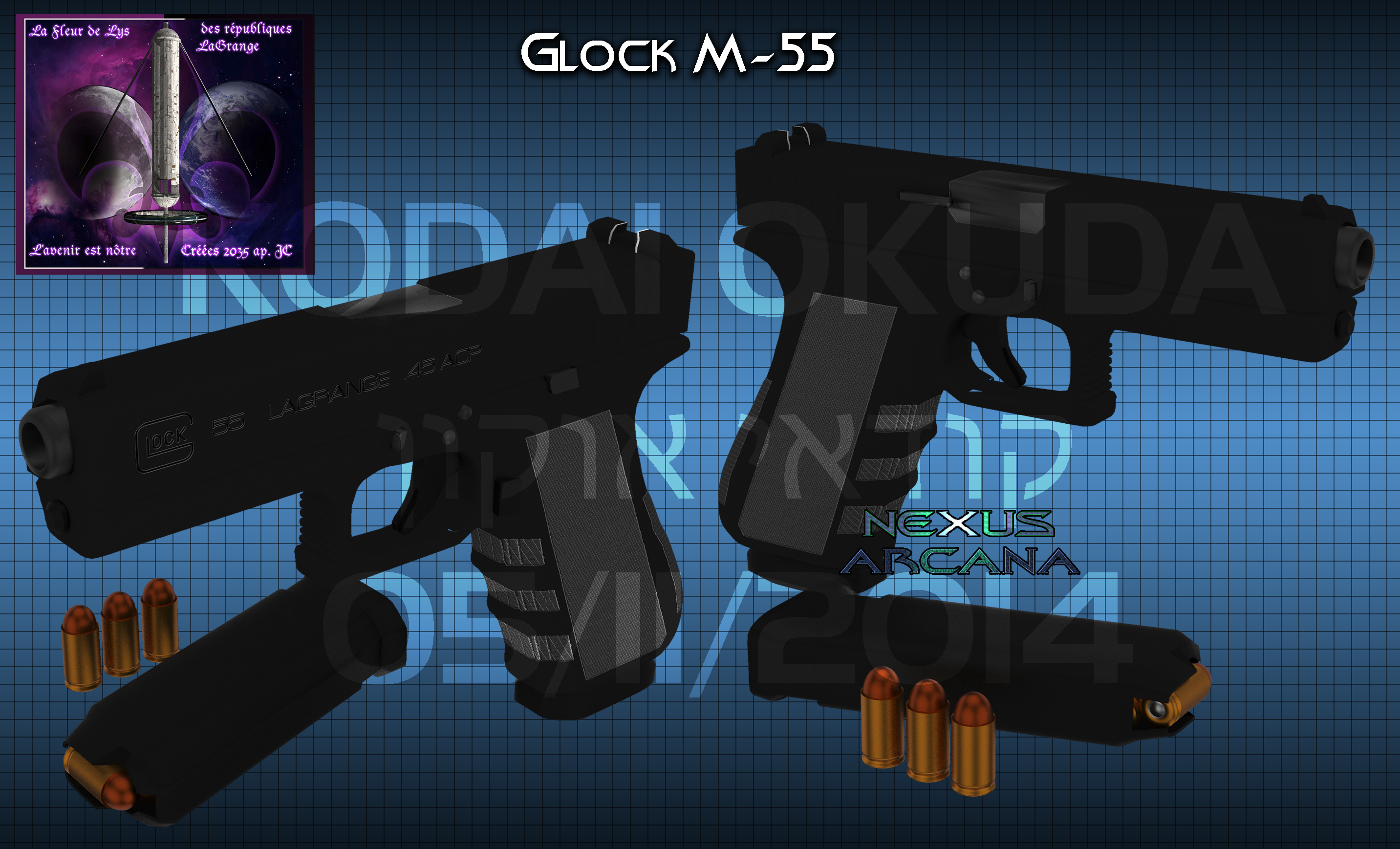 |
Glock M-55:
Manufactured by the L-5 B-22 Bernal Sphere Industrial space island owned by Austria, the Glock M-55 was chambered for the .45 (11.43 millimeter) ACP cartridge. The LaGrange Space Forces were primarily of North American and Western European refugees and industrialists who fled the horrors of World War III, and World War IV (Asian-Pacific Conflict), thus they brought with them stockpiles of different military and civilian weapons from a variety of countries. During the 2130s, the small arms of the the fledgling LaGrange forces were a mess. When the first Bernal Spheres were completed, the Austrian Government ceased on the opportunity to turn a profit and began offering their newly developed Glock M-55 line of pistols to civilian militia, gendarme, and military forces. The hefty pistol was designed for use in space and unlike the M-54 (made by the USSN), this pistol was very reliable. It used a special combination infrared heater/laser-sight unit at the bottom front of the weapon. The large red-reticule is actually a light absorbing lens that converts UV into heat for the lubricants of the weapon. The heating system is connected to the lubricated surfaces that use a specialized low-friction lubricating gel that is capable of staying in a grease-like state in temps as low as minus four-hundred degrees Fahrenheit, or as high as up to fifteen-hundred degrees. The bullets are self-contained with a propellent that creates enough oxygen for combustion within the cartridge itself once the spark of the chemical primer is struck by the firing pin. This weapon does not use a hammer, and is double-action only. It was a very popular weapon with the LaGrange Forces up until their merger with the Earth Federal Republic and the introduction of laser weapons in the 2170s. |
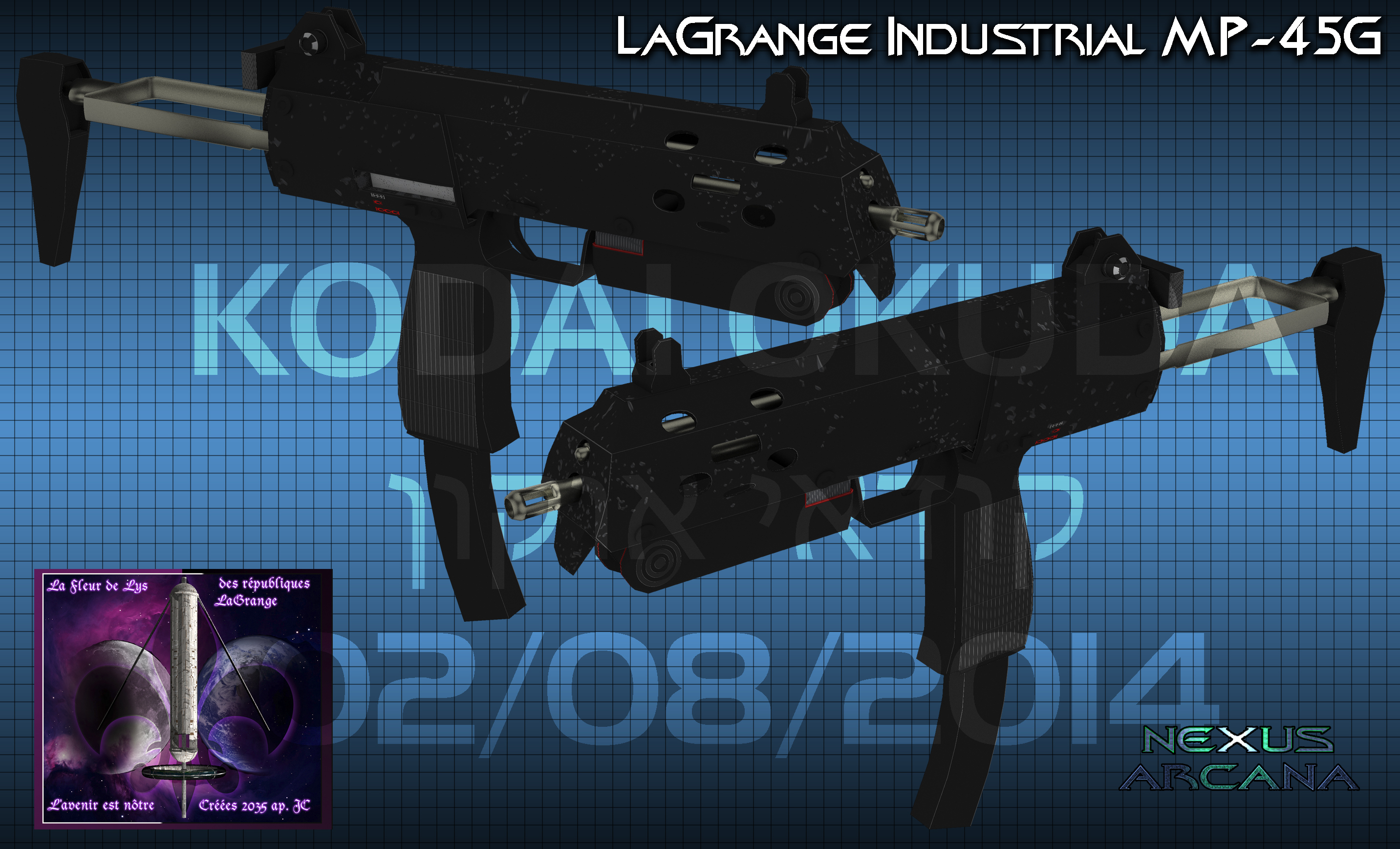 |
MP-45G Submachine Gun:
German made submachine gun manufactured by Norking-Weapons at their industrial Bernal Sphere in the L4 colonies region. The MP-45G used a 30 round box magazine (similar to an Israeli UZI) and was constructed using of composite alloy and plasti-steel compounds. The weapon had a wireless electronic sight that could tie directly into a HUD display of a combat helmet or computerized eyewear. The weapon was light weight, and compact, making it the weapon of choice for spacecraft pilots, security forces, and home defense. Civilians in the LaGrange colonies were required to own, carry, and train in the use of arms. This policy was modeled after the Swiss militia model and was crucial to the LaGrange Republics security throughout the Great War, and especially during the 1st Interplanetary War when the LaGrange Republics attempted to maintain neutrality. The MP45 was an extension of a long line of submachine guns and while not particularly remarkable in performance or capability, it's sheer numbers produced set it apart from other such weapons. Over 200 million were produced solar system wide by various countries and stellar nations and everyone from police, to military, to militia, to space pirate used this weapon type at one time or another. |
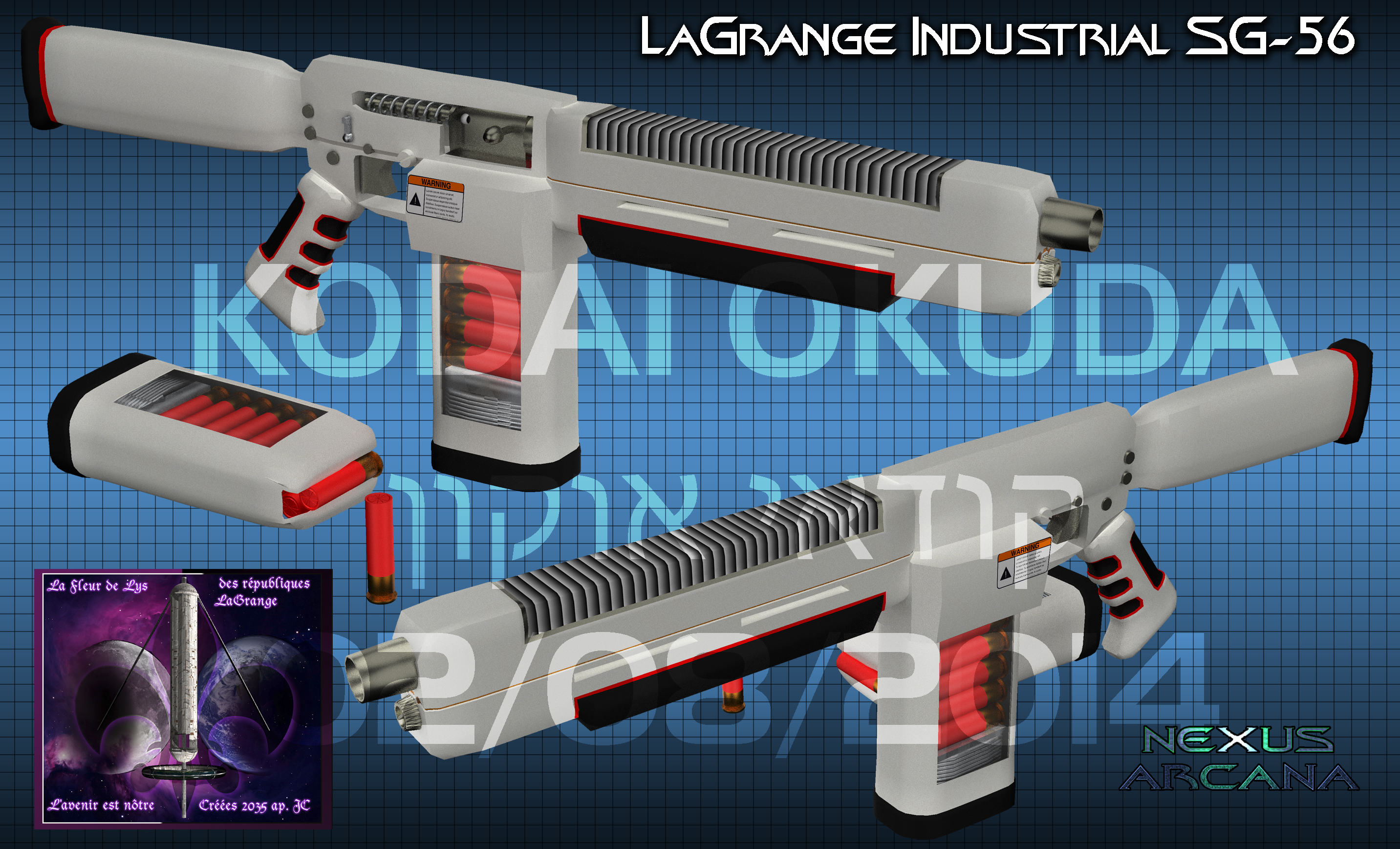 |
SG-56:
The most common long-arm weapon in the Earth Sphere was the World Wide Arms SG-46 tactical shotgun. Created by the WWA factory on the L-5 Bernal Sphere SI-18 (Space Island number 18) this weapon replaced the older LAR-51 battlerifle used by both LaGrange and the United States Space Navy. It was a favorite of space pirates, and space marine boarding parties as well as the security forces of bases, space stations, and large spacecraft. The weapon was not used by the UNSC officially, though many of their space marine units had "acquired" these arms for boarding missions. The 12-gauge, 3.5 inch shells were perfect for combat inside a spacecraft where over-penetration of a rifle round could cause unwanted effects, and a pistol caliber might not be strong enough to penetrate EVA suits and/or combat armor. The SG-56 was the predecessor to the PG-62 plasma-gun in that this shotgun could use plasma-tipped slug shells that could inflict horrible amounts of incendiary damage. With wide range of different shells, from 2 inch bean-bag nonlethal shells, to the deadly plasma rounds, this weapon was the best multipurpose arm of the 2150s and 2160s.
|
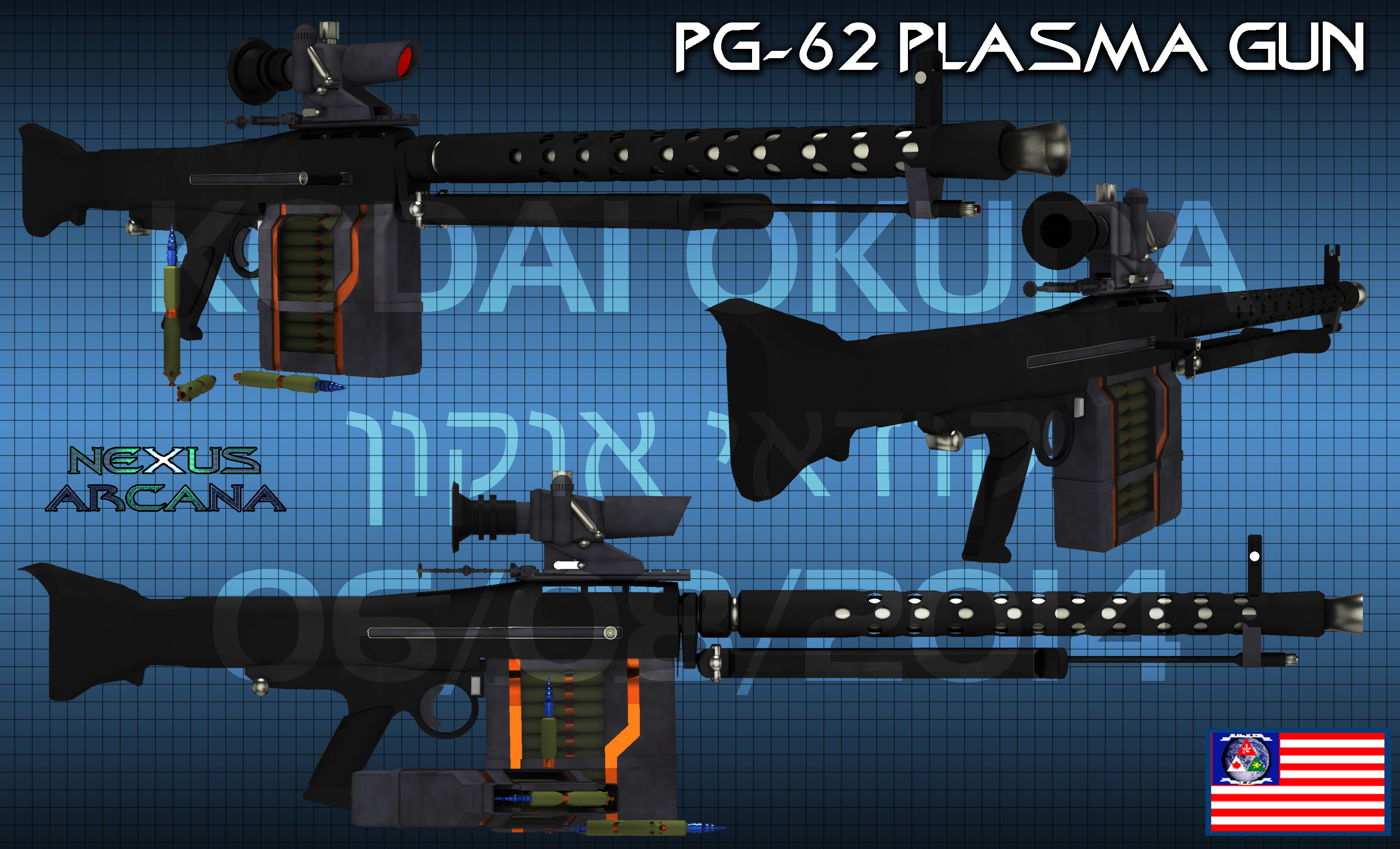 |
PG-62 Plasma Gun:
Essentially a handheld recoilless rifle, the PG-62 was the most devastating weapon of the post-Great War era of the 2160s. This weapon was designed to give a single soldier the ability to destroy UNSC hovertanks, like the Type-55. It was also useful in burning out the interiors of UNSC assault shuttles, and blasting through most airlocks and bulkheads of its day as well as repelling boarding parties. The weapon used a twenty-round box magazine and had a multispectral optical sight. Emergency iron sights were also mounted on the weapon. By 2168 AD, nearly every weapons locker of USSN Kentucky class assault shuttles had at least one of these weapons in it, complete with extra magazines.
|
 |
HCA-01 (Heavy Combat Armor):
The HCA-01 was old when the USNA began mass producing it in 2151 AD. It was designed by the United States of America for their marine and army forces during the 2130s, but never produced. The HCA-01 was generally a good design which incorporated a multispectral sensor helmet, NBC protection (nuclear, biological, chemical) and ballistic resistance. The armor was designed for both planetary and space operations and could withstand all manner of environments. The HCA-01 could act as an Extra-Vehicular Activity suit in space and on airless planetoids and moons throughout the inner Solar System. This armor was used throughout the Great War and by the USSN during the 2160s. It was the most common type of security and police armor of the 2170s and early 2180s. |
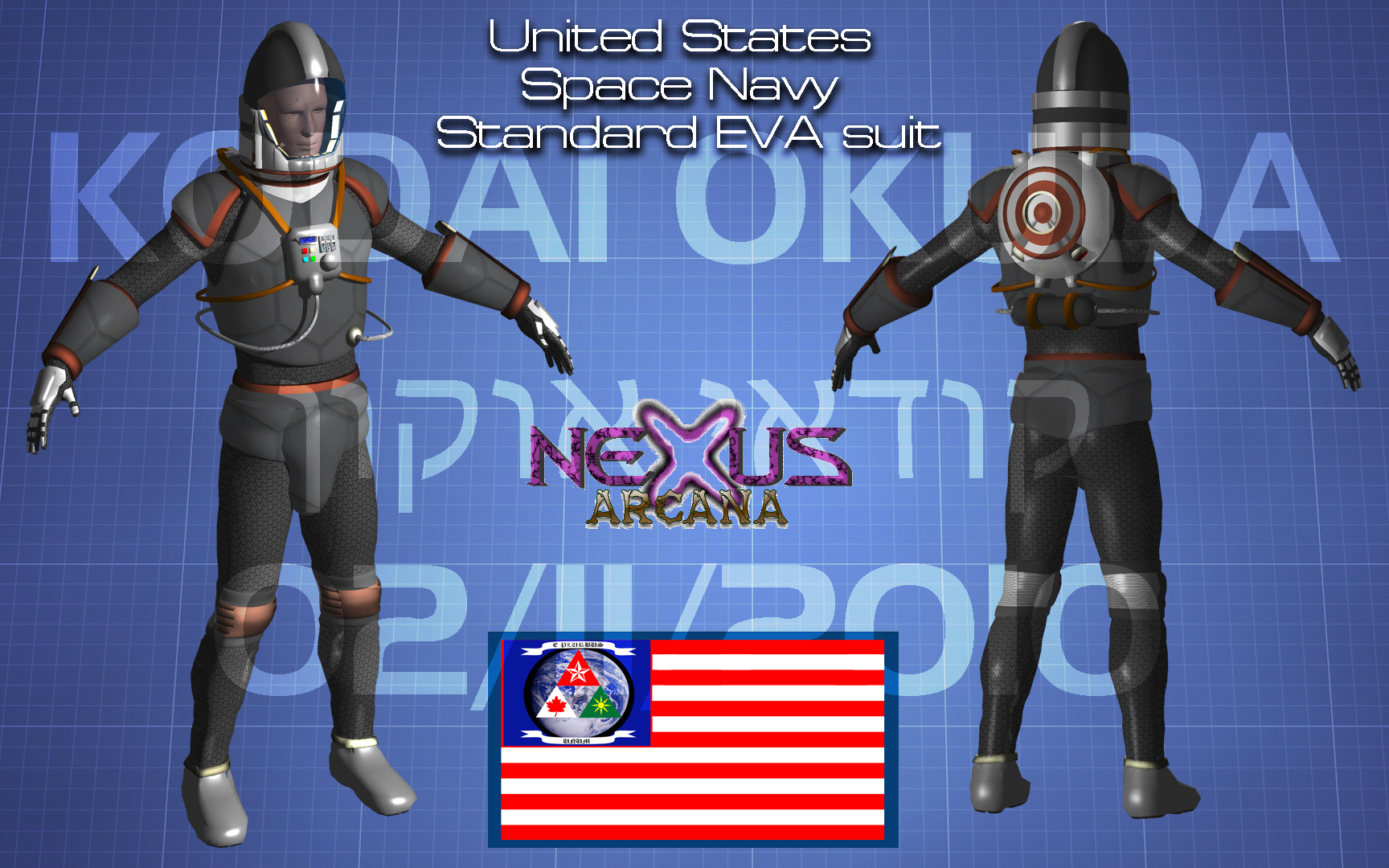 |
USSN-EVA-01 (Space Suit):
Nearly as old a design as the HCA-01, the standard Extra-Vehicular Activity suit of the United States Space Navy was the EVA-01. This suit was designed during the early 2140s as a replacement for the bulkier suits of the 2120s-30s used by NASA. It was a bare bones basic unit intended to be used for limited durations of up to six hours outside of a vehicle or spacecraft. The suit was one of the first to be equipped with a built-in CO2 thruster pack. This thruster pack had two vector control nozzles and could reach a maximum speed of 30 mph in space or a zero-g environment. These suits were used throughout the Great War, the 2160s, and the first years of the 1st Interplanetary War. |

